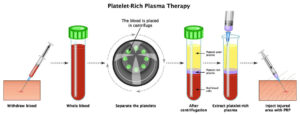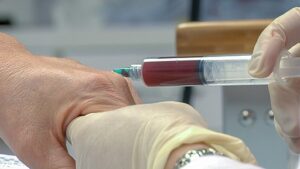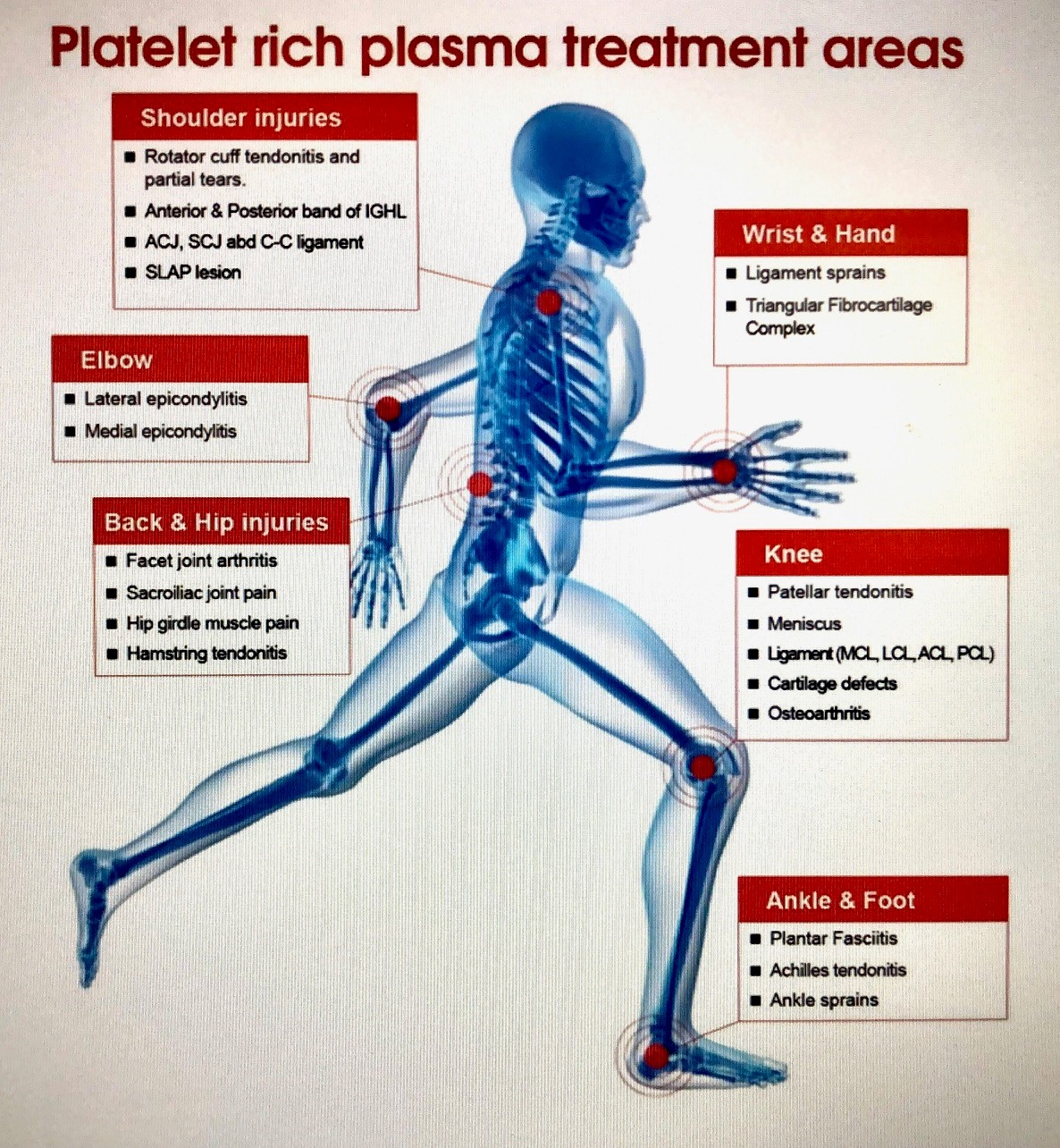Platelets Rich Plasma (PRP)
Platelet-rich plasma, commonly referred to as PRP, is a non-operative, permanent solution for conditions such as arthritis and ligament/tendon sprains and tears. Utilizing the body’s natural healing process, PRP therapy is a concentration of platelets that are injected into the damaged ligaments, tendons, and joints to promote tissue repair and accelerate healing. Platelets are rich in growth and healing factors which means, on average, an injured individual can get back to a pain-free life in four to six weeks.
 The creation of PRP is simple, painless, and conveniently done at an office visit. The entire process of drawing blood to solution preparation only takes approximately 25-30 minutes. A small amount of blood is drawn from the patient, just like a routine blood test.
The creation of PRP is simple, painless, and conveniently done at an office visit. The entire process of drawing blood to solution preparation only takes approximately 25-30 minutes. A small amount of blood is drawn from the patient, just like a routine blood test.
Once the blood is drawn it is then placed into a centrifuge. A centrifuge is a machine that spins the blood at high speeds in order to separate the blood into red blood cells and concentrated platelets. Once the blood is separated the red blood cells are discarded, and we are left with concentrated PRP which is ready to be used in the treatment process.
The platelet-rich portion is collected and injected back into the injured tendon, ligament, muscle, joint, or disc that has been determined to be a source of pain and is not healing appropriately. The whole process (including the creation of the PRP) does not take more than an hour.

When structures around the spine are being injected, x-ray (i.e. fluoroscopy) guidance is used to assure safe and proper placement of PRP at the affected site. In the extremities, ultrasound guidance is commonly used to inject PRP into the appropriate tendon, ligament or joint that is being targeted.
Injections are performed under image guidance to assure precise placement of PRP. The number of injections varies based on each patient’s individualized condition but typically range anywhere from two to six injections done over time. Patients typically experience a significant reduction in pain after the first or second injection.

Some conditions where PRP injections may help
- Lumbar spine disc pain
- Rotator cuff injuries, including partial-thickness
- Shoulder pain and instability
- Tennis and golfer’s elbow
- Hamstring and hip strains
- Knee sprains and instability
- Patellofemoral syndrome and patellar tendonitis
- Ankle sprains
- Achilles tendonitis & plantar fasciitis
- Knee, hip, and other joint osteoarthritis
- Nerve entrapment syndromes, such as Carpal Tunnel Syndrome
- Sacroiliac (SI) joint dysfunction and pain
- Lumbar and cervical facet dysfunction and pain
